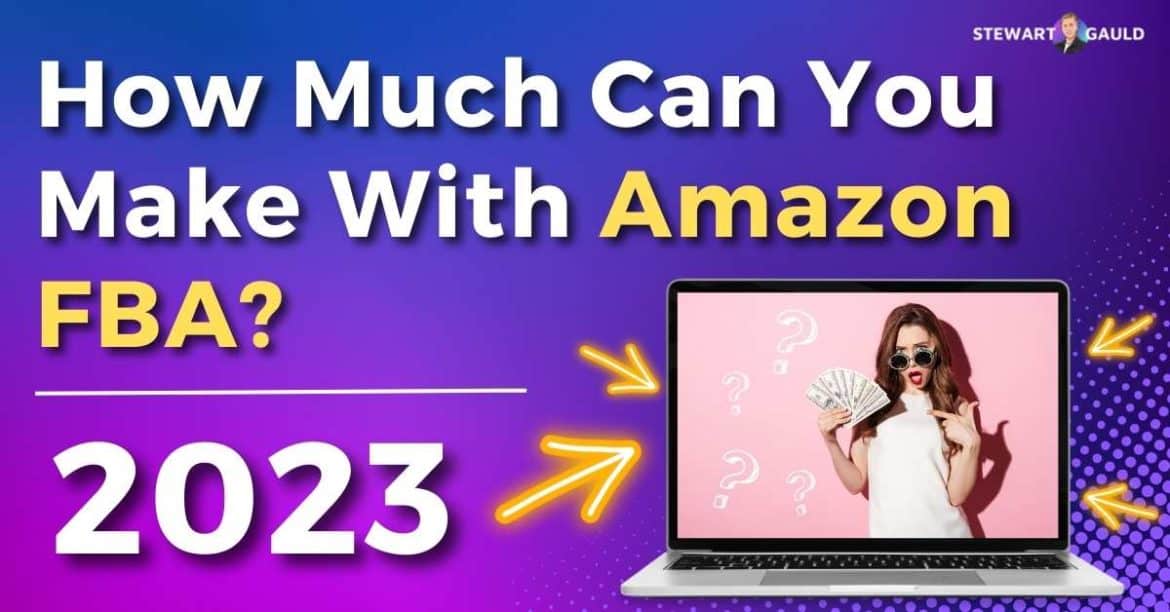Having broken the $1 trillion market capitalization barrier, Amazon is one of the largest companies in the world. Wondering, how much you can make with Amazon FBA?
And you wouldn’t be the first to wonder if you can get a slice of the pie using their popular FBA (Fulfilled by Amazon) service!
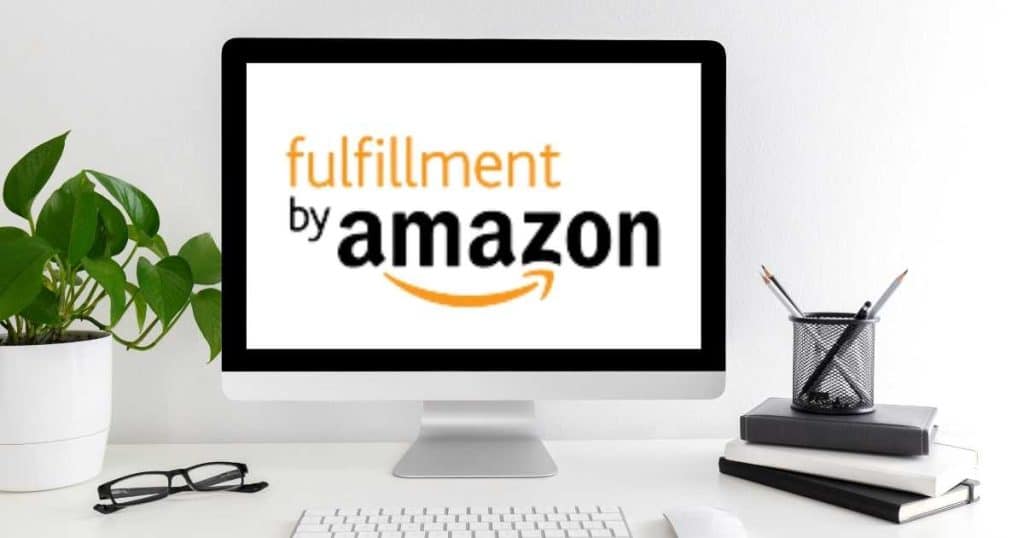
But before you spend your money, time, and energy on this collaboration, it’s important that you know what you stand to get out of the deal — It’s just good business sense!
We so often skirt around the topic of money in our society, afraid of being impolite, even though it’s the fundamental element at the core of almost any endeavor, so let’s can the good manners right off the bat and cut to the quick.
Today, I’ll be informing you of your prospects when using Amazon FBA, so you can decide if it’s right for you and your online business.
How Much Money Do Amazon Sellers Bring In?
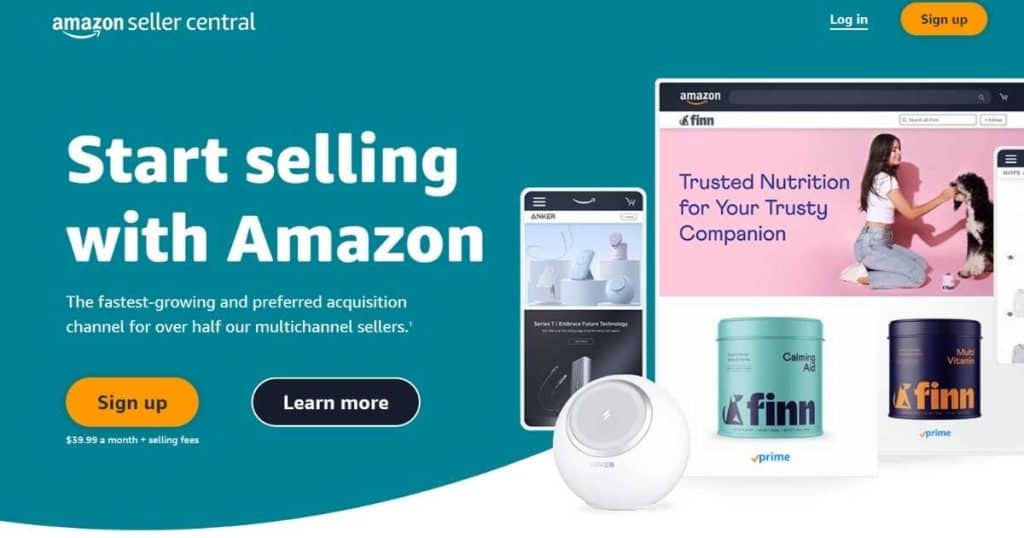
You’re right to consider utilizing Amazon and its services, as recent studies have shown that merchants are making a respectable profit on the e-commerce platform.
70% of sellers pull in $1000 or more each month, and 26% are raking in $25,000 or more in monthly sales, which amounts to an average of $300,000 per year, minus certain expenses on stock and listing fees, etc.
Now, obviously, those at the bottom end of the 70% earning about $1000 a month from Amazon won’t be quitting their day job any time soon, but as a supplemental income — Yowza!
Here’s the full list of results sourced from the research in question:
- <$500 — 17%
- $500 – $1,000 — 10%
- $1,001 – $5,000 — 17%
- $5,001 – $10,000 — 12%
- $10,001 – $25,000 — 16%
- $25,001 – $50,000 — 12%
- $50,001 – $100,000 — 8%
- $100,001 – $250,000 — 5%
- $250,001 – $500,000 — 1%
Of course, sales statistics aren’t a true indicator of pure profit, but one thing these stats do tell us is that Amazon is a tool with some serious money-making potential!
But now let’s get down to brass tacks… how does Amazon’s FBA service impact your returns?
Read more: 21 business ideas that require NO money
Can Amazon FBA Help You Make More Money?
One of the reasons that Amazon has become such a popular platform is that it handles a lot of the tricky aspects of selling goods online for you, chief among them being exposure.
Amazon presents your stock to a global audience immediately for only minimal fees, meaning you save on office leases, marketing staff, and the marketing strategies they’d cobble together.
But Amazon doesn’t stop there.
The folks over at Amazon HQ understand how difficult and expensive it can be to store your products and fulfill orders in a timely manner, especially if you’re a one-person business picking up a decent amount of momentum in the sales department — Enter FBA.
FBA provides the warehouses you can’t afford so you can stock up to the nines, and when you make a sale, Amazon will swiftly get the product to the customer on your behalf, so you can focus on more important aspects of your business.
So, just to be clear, when using FBA, you don’t need to buy or rent storage for your stock, and you don’t have to fulfill sales, meaning you save a small fortune, especially when scaling your business.
Read more: Best Print on Demand service
Popular FBA Business Models
Any seller worth their salt can make the FBA program pay, but there are a few business models you can stick to if you’re not sure how you’d approach it.
Let’s take a look at each of them and their money-making potential.
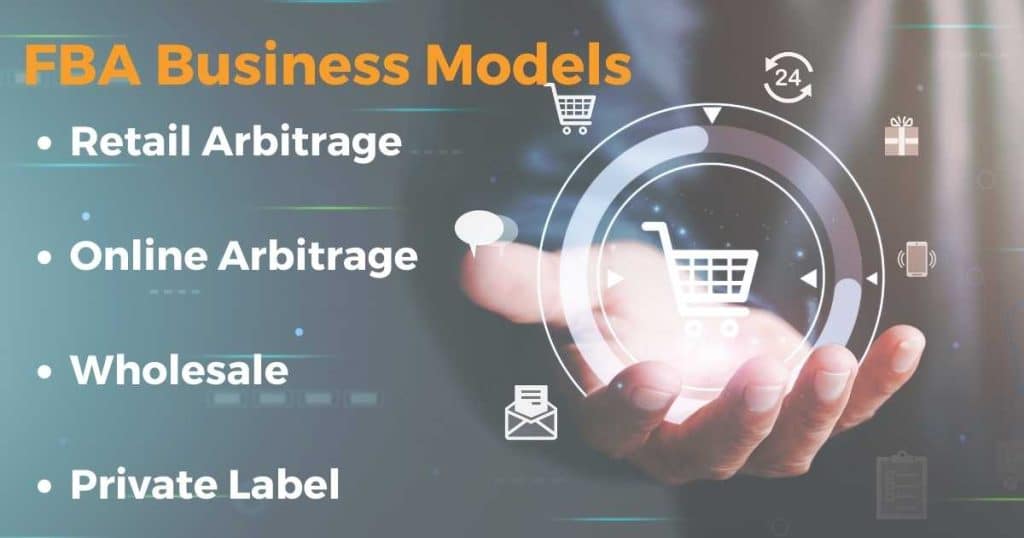
Retail Arbitrage
The Retail Arbitrage business model is super simple, so it’s a fantastic way to test the FBA waters. It involves finding bargains at brick-and-mortar stores, then selling your choice finds for a profit on Amazon… that’s literally it!
Any money you make above the cost price of the product and any fees due to Amazon is pure profit.
Sounds good, right? Well, it is, but it’s not a perfect system as it takes some serious work to find only very small amounts of stock, meaning unless you employ a few extra pairs of hands, it can be insanely difficult to scale.
Online Arbitrage
Take the retail arbitrage blueprint discussed above, remove the brick-and-mortar stores from the equation, and voilà; you’ve got Online Arbitrage.
Sourcing your products online saves a bunch of time (and your feet!), as you can trawl through hundreds of thousands of products with the click of a mouse.
You can also have the products you find sent directly to the fulfillment center rather than mailing them or dropping them off yourself.
All in all, it’s a much more efficient system, but it doesn’t completely solve the scaling issue, as you’re still picking up individual products.
This might not mean all that much to you, as the real draw of both retail and online arbitrage is that the startup fees are remarkably low, and when you’re starting out, scaling your operation isn’t on the agenda.
Still, I’d consider these business plans more of a side hustle than a goldmine, but you can always use them until they stop making sense then move onto a different system that supports your evolved business objectives.
Wholesale
Wholesale is the solution to all your scaling woes. Instead of picking up individual bits of stock from outlets, you contact brands and wholesale suppliers and buy products in bulk, so you can supply greater demand.
This business model is all about forging strong relationships with your suppliers, as consistency is key. You should be able to rely on frequent identical shipments coming through to keep your online store stocked, and they should come at a reasonable price too.
Not only does this mean you’ll be making more sales with a fraction of the effort required of arbitrage, but you’ll be able to start building a cohesive and recognizable brand, which in turn will only bolster your revenue.
Yet, as great as the wholesale method can be, projected earnings pale in comparison to those generated via my next and final business model recommendation.
Private Label
In a nutshell, Private Labeling means to have products created specifically for your brand.
You’ll either use the power of your brand to sell them, or you’ll improve upon existing products and offer something superior.
The name of the game here is meeting very specific customer demands, which takes a lot of market research, but if you can identify a few crucial pain points related to certain products, you stand to make a lot of money.
Once you have your product idea and design, you can approach manufacturers to bring your vision to life so it can be sold many times over on the Amazon platform.
There’s more of a learning curve to this process, and you’ll have to form relationships with manufacturing plants, but it’ll be worth the effort, and here’s why…
Work Once, Paid Forever
Doing market research, coming up with a product, designing the packaging, and striking a deal with a manufacturer is a lot of work, but once it’s done, it really is done!
That product can now sell time and time again, especially if it’s a finite item that needs replenishing every now and again, such as protein powder or hand cream.
International Reach
With an infinite supply of products, you can now take your wares to the international market, as Amazon is opening more and more FBA facilities overseas every year.
Higher Profit Margins
The longer a supply chain of a product is, the less you stand to make from its eventual sale, as each “link” in the chain needs to be remunerated for the part they play in getting the product from the factory to your customer.
So, by heading directly to the first link in the chain, i.e. the manufacturer, you cut out the other links, meaning you’ll be paying a fraction of the price of an arbitrage scheme to stock your own branded product, leading to significantly higher profit margins.
Lucrative Exit
Imagine you built a house from scratch. You paid out for materials and labor, but now it’s complete, it’s worth a darn site more than the cost of construction. The same is true of your private label business.
What you’ve created is something of immense value, and people or organizations will be eager to get in on the action, usually by buying you out for about 4 or 5 x the annual profit of your business, possibly even more.
Granted, you can sell a wholesale or arbitrage business too, but you’ll only get pennies compared to the vast sums of cash a private label business can go for.
If you work hard and keep your finger on the pulse of your ideal customer, there’s nothing to say you can’t end up with an asset worth millions.
Read more: How to sell digital products
Which Business Plan Is Right For You?
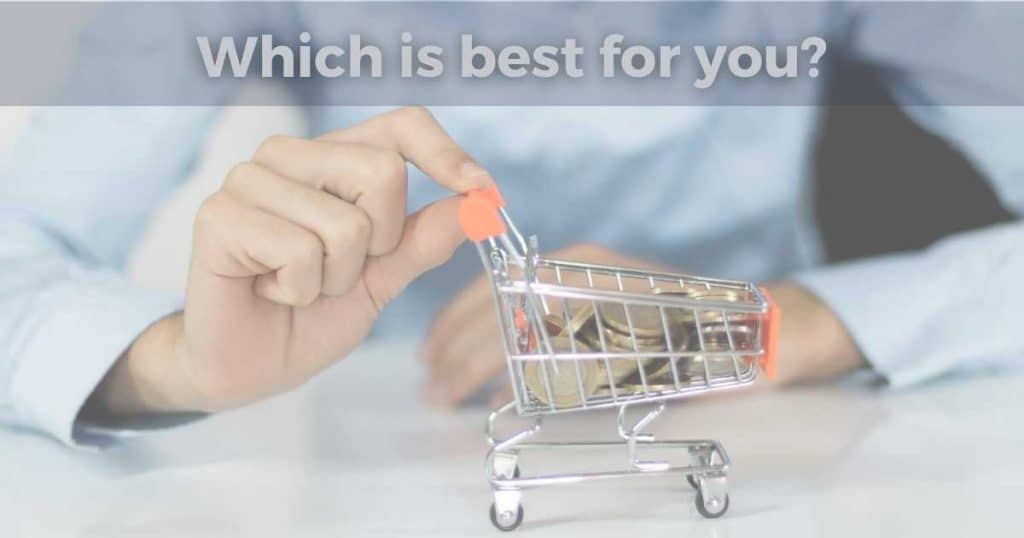
In an ideal world, you’d jump right into a private label endeavor, but we don’t all have the money or the time to spare. Instead, you should start with whichever business plan seems doable.
Don’t worry about hemming yourself into an idea forever, as you can always shift and adapt to suit new circumstances.
In fact, you may have noticed that the business plans discussed earlier have a logical linearity about them, by which I mean that you could start with retail arbitrage and work your way up through the different plans until you have the resources for private licensing.
When Should You Expect To Make Money With Amazon FBA?
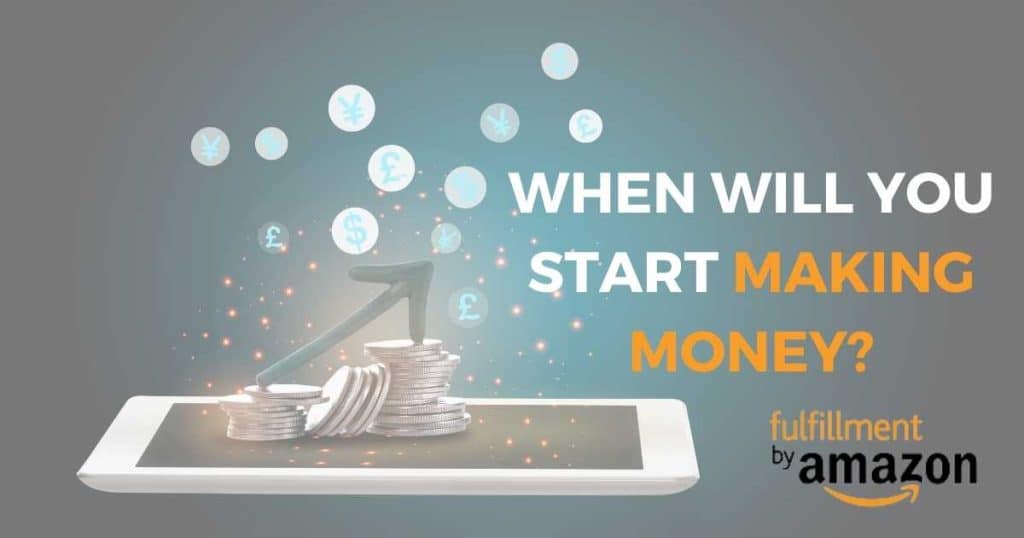
Okay, so we’ve established that there’s potential to make bundles of cash on Amazon, especially with FBA, but I’ve been pretty vague about timelines up until this point.
Let’s focus on that next!
It’s hard to give you a precise answer regarding the time it takes to generate a profit, as there are a number of variables involved, but we can sketch up a rough idea by examining said variables, or at least the main ones anyway.
They are…
- Your financial mission: Are you after some supplemental income for low effort, or are you willing to knuckle down and shoot for the big bucks?
If you’re looking for a bit of a side hustle and nothing more, you can expect to see some small profits pretty quickly, but anything life-changing is beyond the realms of reality.
On the other hand, if you’re going for gold, you’ll earn at a slower rate at first, but when it rains, it pours, so to speak.
- Your pre-launch budget: A bigger investment usually equates to faster growth.
- How patient you can be: Reinvesting profits rather than pocketing them can stimulate massive business growth and get you quit-your-day-job money ASAP, but it’ll still be quite the journey.
So, let’s assume that you are shooting for the moon with your Amazon business… How long would it take to create, say, a seven-figure brand?
Well, if you had a starting budget of about $3,000 and everything went according to plan, I can see how you’d reach your goal in three years or so; check it out…
Year #1 — Establishing Profit
If you’re dedicated to your research, you might be able to find and design a product that fills a niche in the market within a month or two. Realistically, you could then repeat the process a couple more times in a relatively short period.
Once your products are conceptualized, it’s easy enough to make some connections with manufacturers and have your products made. Perhaps this would be followed by a short testing phase, but besides that, you can launch your products right away.
Considering the volume of sales on Amazon, it’s not absurd to assume that each of your three products might reach $10,000 in monthly sales after only a few months on the market, especially if you’ve got a respectable marketing plan.
Now let’s say that – after overheads and miscellaneous expenses are accounted for – you’re working with a 20% profit margin. Even then, that would give $6,000 of pure profit every month for the remainder of the year.
You’ll then exercise restraint, and instead of treating yourself to luxuries, you’ll funnel your profits back into the business.
Year #2 — Growing Profit
As you enter year two of your journey, you’ve already got some solid momentum going, but you need to boost your profits if you’re going to hit that seven-figure target by the end of next year.
Your established products will of course grow in popularity, meaning you can order larger quantities from your manufacturer at a discounted price, so profits will be on the up, but to really get those income graphs spiking, you need to launch three more items.
It’s unlikely that all six products will resonate with your target market, so let’s assume you drop one dud to prioritize your five successes. At this point, they’re probably averaging $15,000 in sales each month, giving you a total monthly revenue of $75,000.
Split the overheads and miscellaneous expenses, and you’re looking at something to the tune of $15,000 in profit each month.
At this stage, you’ve got a comfortable amount coming in, so begin paying yourself and quit your job so you can dedicate yourself to your private label business.
Bringing on some help isn’t entirely out of the question either, but don’t splash the cash just yet. You really need to squeeze business costs to make the desired progress in year three.
Year #3 — Bringing It On Home
You’re doing well for yourself as you hit the home straight, and by all means pat yourself on the back, but don’t let up! It’s pedal to the floor time in an effort to hit a consistent $100,000 in monthly revenue.
To do so, you’ll launch another six products.
By this point, you have a strong, recognized brand with a loyal and growing following, ensuring your new listings hit the market running.
And once you hit that $100,000 threshold, you’ll be taking home $20,000 a month in sweet, sweet profit. Keep this momentum going over the entire year, and, theoretically, your brand is worth a cool $1,000,000.
Bear in mind that this is a best-case scenario, and there may be some obstacles to navigate along the way, but I hope what this roadmap illustrates is just how quickly your Amazon FBA side hustle can snowball and completely transform your life.
If you want, you can start pocketing your profits sooner and slow down on product launches, but remember, if you want the big bucks, you have to give your business time to incubate. It sounds contradictory, but the more patient you are, the faster you’ll make a mint.
Read more: Best website builders for an online store
What Does It Take To Build A 7-Figure Brand On Amazon?
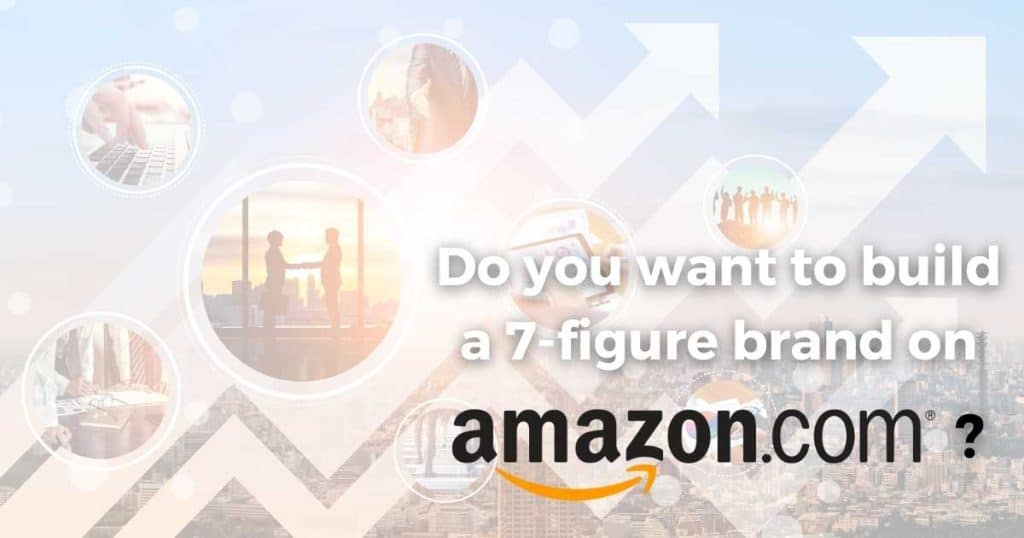
I broke down that 3-year plan into the main points, but behind each one is the blood, sweat, and tears of the seller. Make no mistake… sticking to such a tight schedule is hard.
You really have to put your nose to the grindstone to grow your profits at such an alarming rate, and only if you’re learning about the nuances of your role as a seller and how you can better your brand.
It’s a lot to take on, but the following tips should help you stay the path and expedite your success.
Data Over Heart
I can’t stress enough how important it is to have perspective from the get-go… you are not creating products for yourself; you are creating products for the market.
In essence, what this means is that you shouldn’t let your personal opinions or emotions lead. Just because you think a product would be pretty nifty, doesn’t mean that a large enough audience to make it profitable will agree.
Remember, you’re not just combing the market to find any old niche, you’re searching for a niche that can be filled by a product with high profit margins and even higher demand, and it’s data that’s going to help you find it, not your heart.
Stand Out In The Crowd Or Vanish Within It
If you’re launching products that already exist, it’s essential that yours is unique, has been improved in a marketable way, or at least offers some form of extra value to your potential customers.
Offer the same product with a facelift, and you’ll never make the gains required of the three-year roadmap detailed earlier; it’s just not possible. You’ll be splitting the market with all the other identical listings already available on Amazon, meaning you’ll be lucky to turn any sort of profit.
If you’re concerned that some of your products are a little too similar to what’s already on offer, you can add value to customers in other ways, such as fantastic after-sales support, deals, or buyer bonuses.
Read more: Shopify vs Etsy for selling online
Familiarize Yourself With FBA Tiers
Amazon FBA isn’t free; you have to fork out for the luxury.
How much depends on the size and weight of your products. Larger, heavier products carry a significantly higher fee, so be sure to research the tier limits and do your best to stick to the lower levels.
Plan For The Future
At the start of your relationship with manufacturers, you’ll face pretty steep unit costs because you’ll be making quite small orders, but it won’t always be this way.
As your orders grow in tandem with your brand, you should be offered better rates by the manufacturer, but this isn’t guaranteed, so broach the topic right away, before you come to any sort of accord.
You’ll be banking on those discounts as early as the closing of the first year, so leave nothing uncertain. Be confident and ask what sort of movement there’ll be in production costs for bulk purchases.
Don’t Let Your Launch Flop
There’s a lot of work behind the scenes to be done to ensure a successful launch. Just because a new product hits the shelves, doesn’t mean you’ll be given favorable treatment by Amazon or their algorithms.
You have to fight the good fight to get your listing seen by your target audience. This means investing in PPC (pay-per-click) campaigns, driving external traffic, and SEO-ing the hell out of your listing.
Visibility is incredibly valuable during a launch, so use every arrow in your quiver to draw the attention that your product deserves.
Read more: How to do keyword research
Keep A Close Eye On Stock Count
Selling out of a product is of course a good thing, but don’t let that empty virtual shelf stay empty for long, as there may be dire consequences!
Long-standing absences in your product lineup can decimate your organic rankings and lead to dips in sales across the board. You may even have to re-launch the product as a means of damage control, which, as you know, will eat into your profits.
The question is, how do you prevent such catastrophe? Well, I’d recommend keeping an open line of communication with your supplier so you can check in regularly and monitor stock availability.
You should also keep a really close eye on your current stock, so you know when to replenish and keep your store’s momentum going.
Expansion Should Be Sustainable
Expansion doesn’t always look like a million and one new product launches. It can also be a variation of one of your tried and tested top-selling products, as it’s all but guaranteed to be a success.
This is an example of sustainable expansion, a concept defined by the maximization of revenue. It encourages us to think of each of our products as a fruit we’re trying to squeeze the juice out of.
Are you certain that you’ve extracted all the juice, or is there some value left in there that you can access through creative means, like releasing a differently colored version of a product, or perhaps a differently sized version?
Read more: WooCommerce vs Shopify
How Much Does Amazon FBA Cost?
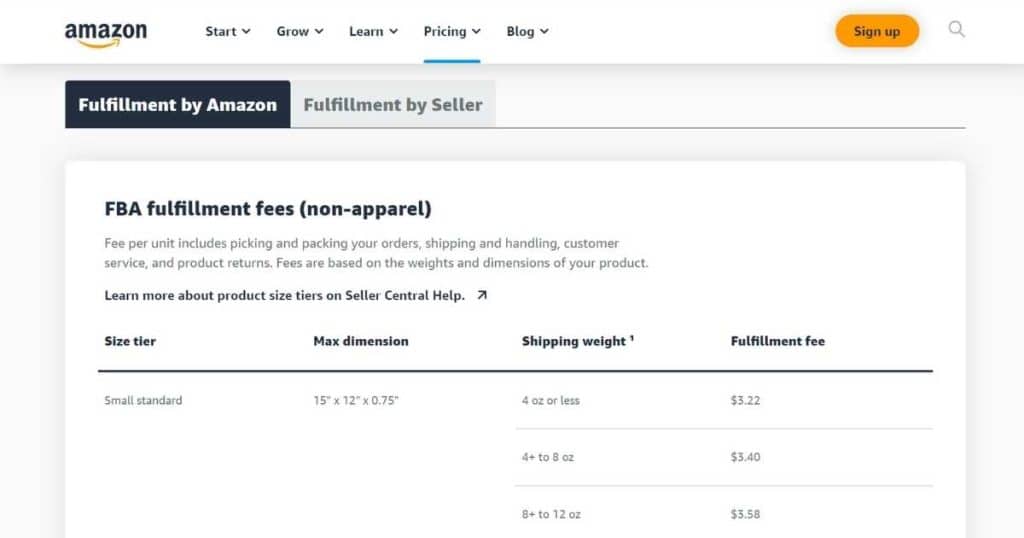
Amazon FBA pricing is very reasonable, so if you run your e-commerce business well, you should have no problem making it work for rather than against you.
As mentioned earlier, pricing is tiered based on the size and weight of your products. It runs from $3.22 per unit for a small product that weighs in at 4 oz or less, and runs all the way up to $9.89 per unit for a large product that weighs 20 lbs.
There is also an oversize tier list that starts at $9.73 per unit for a small product that weighs 70 lbs. And at the very limit of the FBA spectrum, you’ll be spending beyond $158.49 per unit for a “special oversize” product that weighs over 150 lbs.
Note, these are non-apparel tiers. If you’re selling clothes only, you’ll use an adjusted tier list that maxes out well below $10.
Final Thoughts
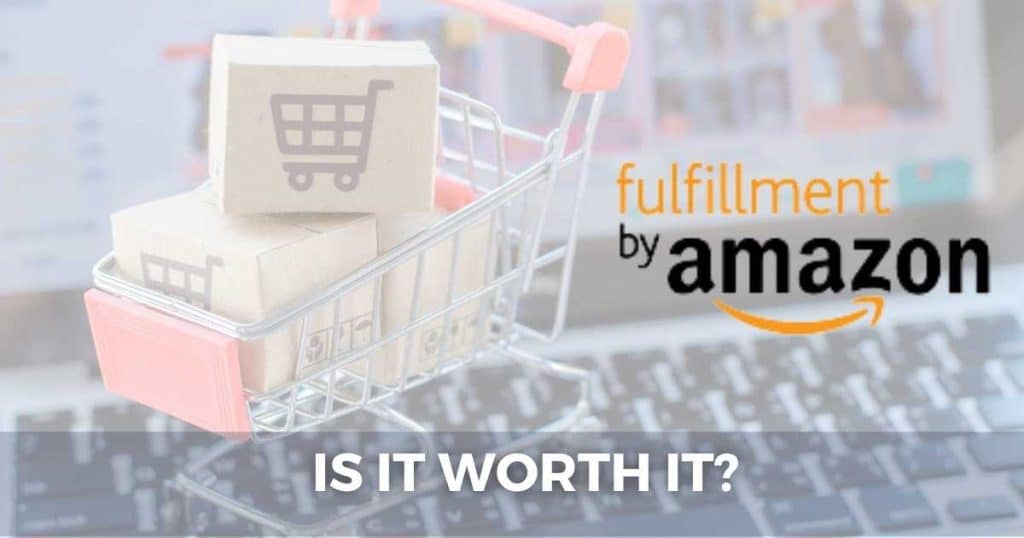
The earning levels on Amazon FBA are myriad — as they are in any business. How high you land on the income spectrum depends on how much you’re willing to put into the endeavor.
Those looking for a carefree seller experience may make a few bucks here and there, but nothing significant. If that sounds good to you, stick to one of the arbitrage business plans we discussed earlier, or possibly the wholesale plan if you want to do more than just dip your toes into the FBA world.
However, if you know what you’re doing and are willing to invest time, money, and effort into developing a brand to sell privately licensed products using Amazon FBA, you can make an absolute killing!
The trick is never to think of yourself as merely an Amazon seller, but as a full-blown business and unique brand. This way, you set the foundation for the success you hope to achieve down the line.
It’s not easy, but nothing worth doing ever is. There’ll be trials and tribulations, but at the end of the tunnel is a reward worth fighting for… a life-changing sum of money.
Of course, you don’t have to sell your brand if you don’t want to. It’s your baby, and if you want to keep it, you absolutely should. You’ll still be absolutely raking it in, you just won’t see such large sums of money all in one go.
Frequently Asked Questions
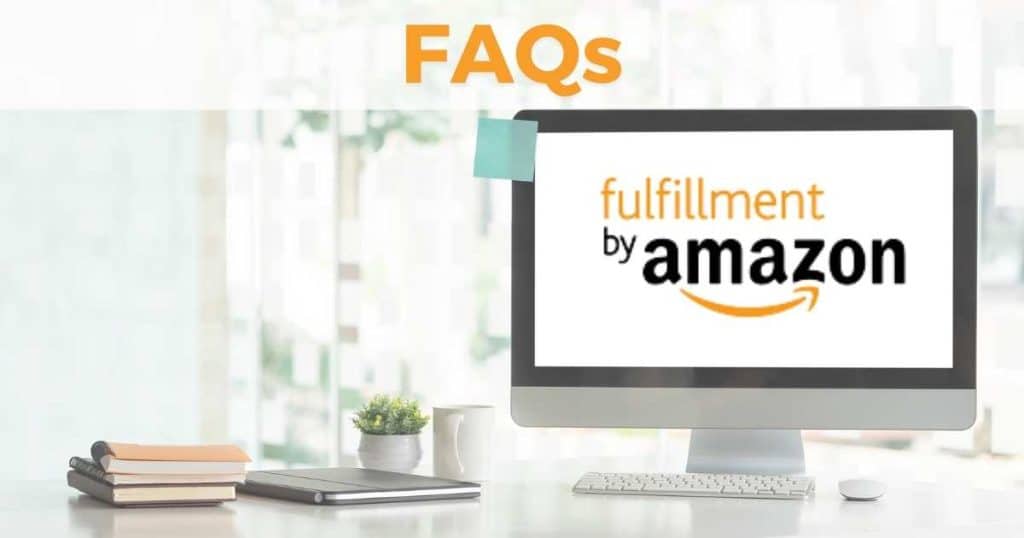
Can You Make Enough Money From Amazon FBA To Quit Your Day Job?
Work hard, and your Amazon FBA business could one day be your full-time job. If you’re particularly tenacious, you could be handing in your notice at your day job within two years.
Such an undertaking isn’t for the faint of heart, but it’s by no means impossible. In fact, Amazon FBA sellers go full-time every single day.
Is It Difficult Making Money On Amazon FBA?
It’s not too hard to make a little bit of money on Amazon FBA, but making lots of money can be quite trying. Hopefully, though, this article has provided you with the knowledge you need to make a go of it and potentially change your life.
Remember that it’s no short-term task. You shouldn’t go into it wondering what you can make of your business in a few months or even a year. Allow yourself a larger time frame to build something fantastic.
Is Amazon FBA Worthwhile?
Amazon FBA is always worthwhile for serious sellers hoping to scale their e-commerce business and make a mint. Be wary, though, the ongoing fees can be a real drag if you’re not smart about your stock.
The last thing you want is your stock stagnating in Amazon’s fulfillment centers, steadily burning a hole in your pocket.
Will Amazon Dispose Of Old FBA Stock?
When storing goods with FBA, you can set parameters that inform staff that your products have become “unfulfillable”. For instance, to avoid long-term storage fees, you may state that stock is unfulfillable after a certain date.
When stock becomes unfulfillable, Amazon will either deliver it back to you for a fee, or if you’re unreachable, your stock will be disposed of.
Is Amazon FBA Worth It For Seasonal Stock?
If you move a large amount of seasonal stock, FBA is still a worthwhile option, as it saves you from storing it and fulfilling sales, but you’ll want to be as precise as possible with your inventory ordering.
Ideally, you’ll sell almost all of your inventory, and when the season comes to an end, you can have a few bits of stock shipped to you for storage throughout the year. You can then keep your product listed year-round and fulfill the few orders you get outside peak season.
If you fail to unload your inventory and your stock stagnates in FBA throughout the year, you’ll almost certainly lose a significant portion of your profit, if not all of it.
What Budget Should I Set Aside For Private Labeling?
I’d recommend saving at least $3,000 before embarking on your brand creation adventure, but $5,000 will give you a bit more freedom and will likely expedite the process.
The wholesale business plan will require a decent amount as well — $1000 should be your baseline. But for arbitrage, you can get started with as little as $200–$300, especially if you’re hitting brick-and-mortar establishments rather than shopping online, as you may not find many more than a couple of items before you start making sales.
Of course, these are all just minimum requirements. Generally speaking, the bigger your budget the better; however, a lower budget often leads to a more measured approach that garners better results with fewer resources.
Is Private Labeling The Best Amazon FBA Method?
81% of all millionaire Amazon FBA sellers own private label businesses, so yeah, I think it’s fair to say that private labeling is the best Amazon FBA business plan if you’re hoping to make some serious money.
Building a brand into a 7-figure asset isn’t easy, but with the right attitude and a bit of business savvy, it’s by no means beyond you. If you want to make it happen, you can!
Is It Better To Invest In My Own Warehouse Or Use Amazon FBA?
Only well-established businesses that sell direct to customers will benefit from a privately owned warehouse, especially if inventory is made up of quite large, heavy products, as they’ll chalk up some pretty scary fees when stored in an Amazon FBA facility.
For small-to-medium-sized businesses, FBA is almost always going to be the most beneficial option when it comes to storage and order fulfillment, as it allows you to operate like a much larger outfit for next to no money.
